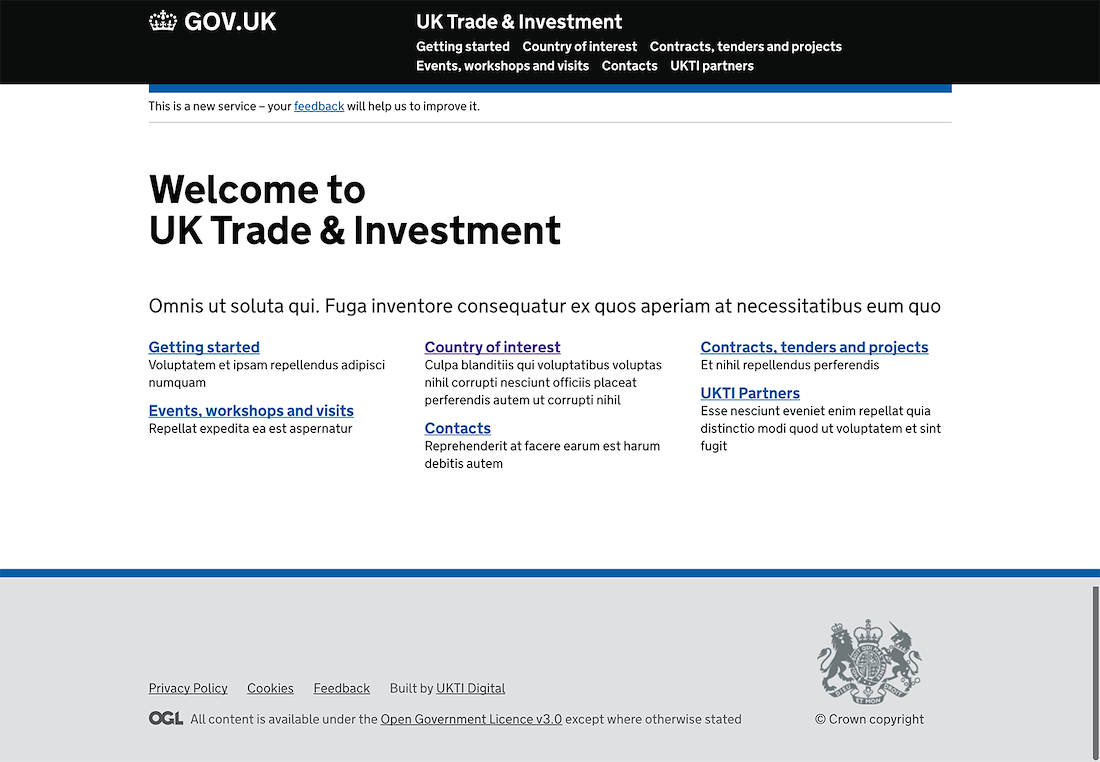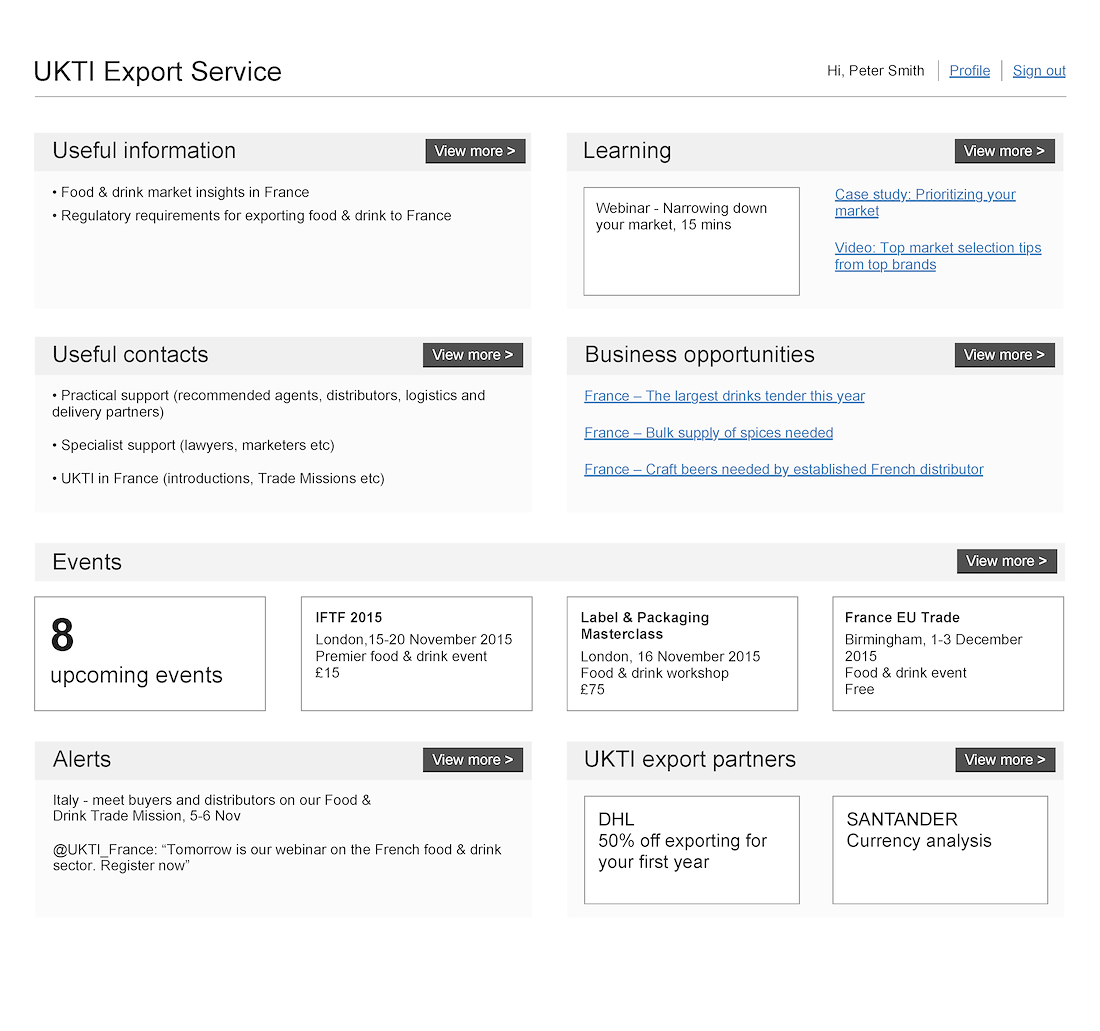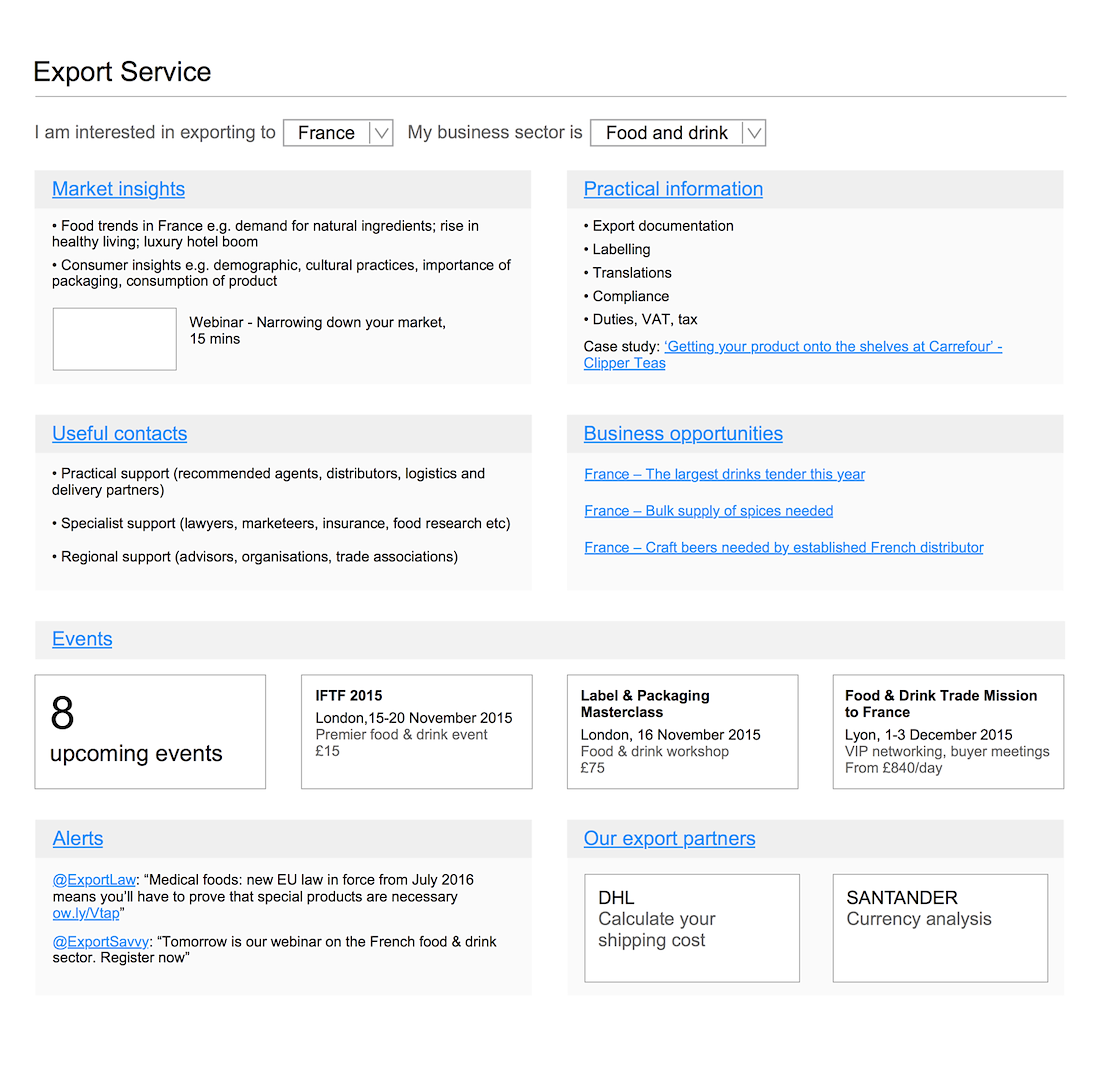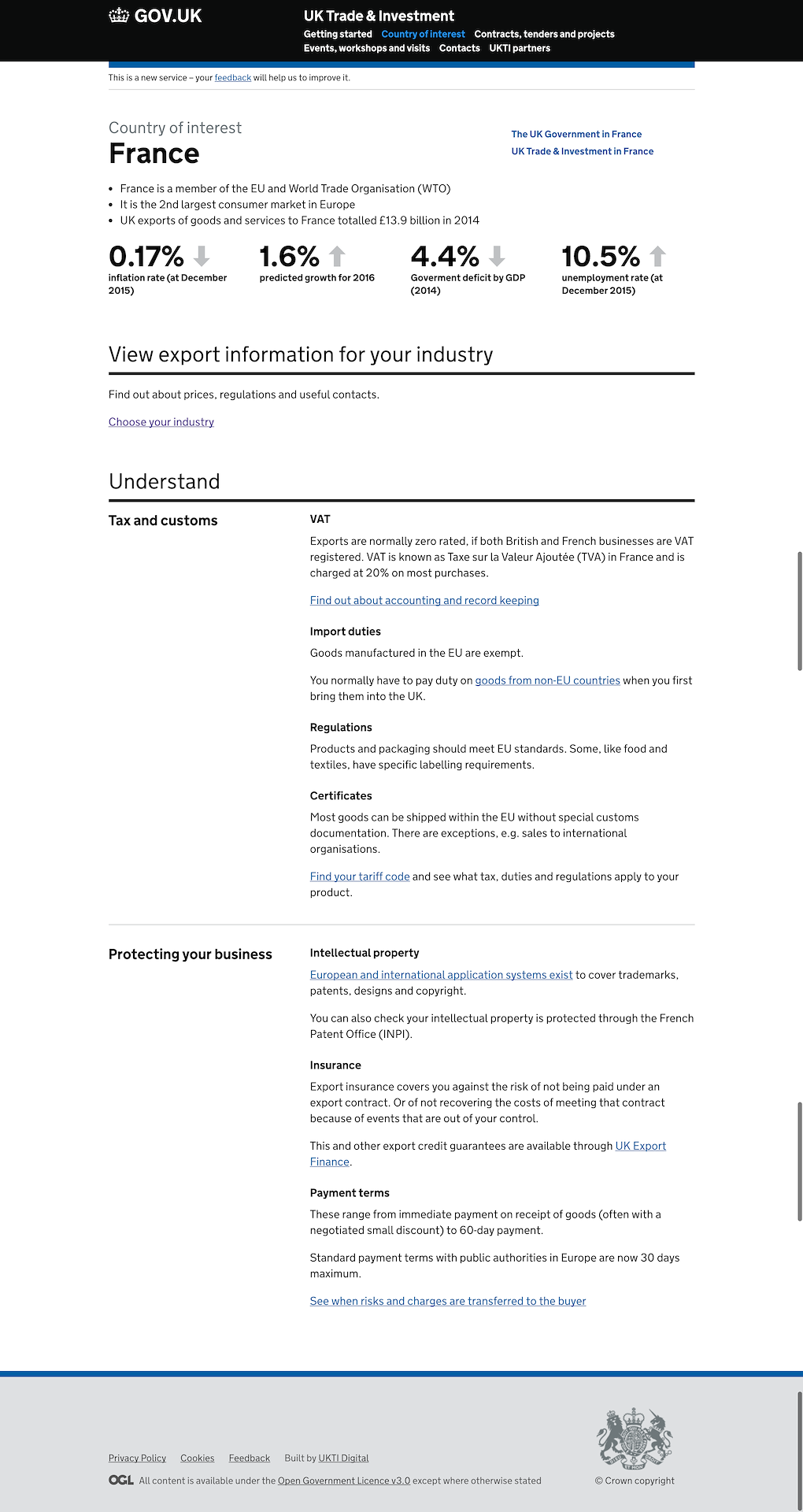Treating this as an enterprise-scale service design problem, four key stages shaped the strategic direction:
1. Discovery research: Contextual interviews, pop-up testing at Export Week, and analysis of CRM data revealed gaps and inefficiencies.
2. Mapping the end-to-end journey: From “want to export” through “deciding to export” to “successfully exporting”. This gave us the blueprint for where content, tools, and transactions should sit.
3. Proof-of-concept prototypes: Tested flows that let a user choose a country, filter by sector, then access tailored regulations, opportunities, events, and partners, all in one place.
4. Iteration and validation: Live testing with SMEs confirmed that consolidation, clarity, and trust (via GOV.UK branding) unlocked real value.



